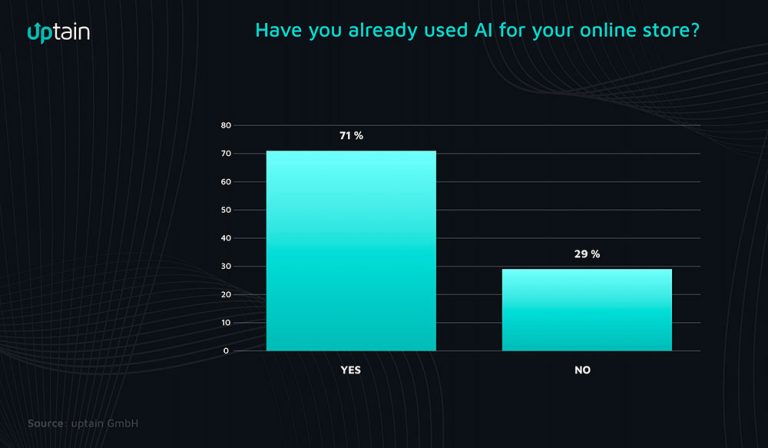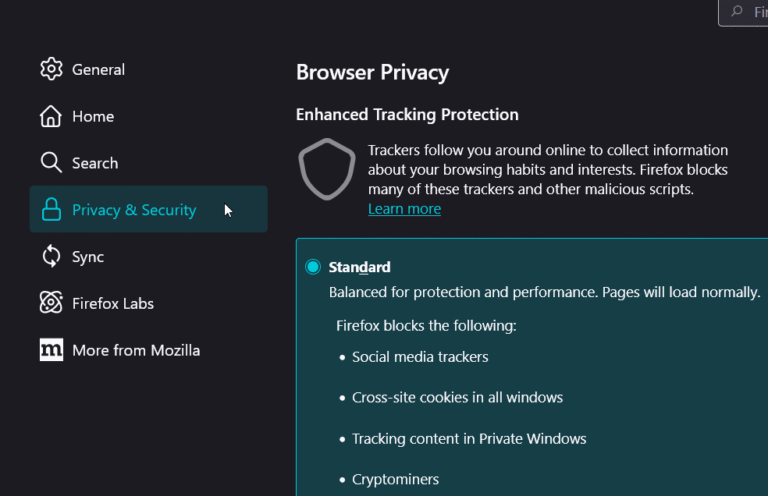In today’s digital landscape, safeguarding your website is paramount, and understanding cPanel security best practices is a vital step in this process. This article presents a comprehensive outline designed to help navigate the complexities of cPanel security, from recognizing common threats to implementing effective protective measures.
By exploring essential strategies such as strong password management and two-factor authentication, you will gain the knowledge needed to keep your online presence secure. Discover the tools and techniques that can help shield your website from potential vulnerabilities.
Key Takeaways:
Understanding cPanel Security Best Practices
Understanding cPanel security best practices is essential for protecting your website from a wide range of security threats and vulnerabilities. Given the rising incidence of malware attacks, phishing emails, and unauthorized access due to root compromise, the implementation of robust security protocols is not merely advisable but imperative.
As WHM users and web administrators, it is critical to prioritize website management strategies that include regular updates, strong password protocols, and security software specifically designed to safeguard against malicious activities.
This comprehensive guide will explore effective practices for enhancing security settings in cPanel while ensuring that data access remains secure and adequately monitored.
Importance of cPanel Security
The significance of cPanel security is paramount, as it serves as the foundation for managing a website’s hosting environment and ensuring robust website security. Implementing appropriate security measures is essential to prevent unauthorized access, mitigate security breaches, and protect against various cybersecurity threats that could compromise sensitive data and undermine user trust.
In a digital landscape susceptible to malware attacks and phishing schemes, it is crucial to understand how to effectively utilize cPanel’s features to maintain a secure online presence.
Inadequate security within cPanel can have severe implications for organizations, including root-level compromises that jeopardize not only the website but also interconnected systems and databases. Such breaches can lead to financial losses, legal ramifications, and irreparable damage to an organization’s reputation. Consequently, it is imperative for users to engage in continuous monitoring and implement timely updates to their security protocols.
Furthermore, employing strong passwords and enabling two-factor authentication can significantly enhance overall security, providing multiple layers of protection against potential threats. By approaching cPanel security with diligence and proactive measures, organizations can better safeguard their digital assets and maintain user confidence.
Overview of cPanel
cPanel is a robust web hosting control panel that facilitates website management and enhances server security for webmasters and developers. Its user-friendly interface equips WHM users with the necessary tools to manage multiple domains, databases, email accounts, and security settings from a centralized location.
Through effective user management and configuration options, cPanel enables site administrators to actively monitor potential vulnerabilities, ensuring the security of their web environment against various forms of malicious activity.
The seamless integration between cPanel and WHM not only streamlines server management tasks but also significantly strengthens security measures. This includes features such as ModSecurity, which aids in preventing web exploits, and cPHulk protection, which defends against brute force attacks.
Furthermore, cPanel enhances website security by providing automated backup recovery solutions, allowing for the swift restoration of sites in the event of data loss. Users frequently find that these comprehensive functionalities simplify overall website management, making it easier to maintain optimal performance, protect sensitive information, and respond proactively to potential threats.
Common Security Threats to Websites
Common security threats to websites present significant risks to both the integrity of online data and the overall functionality of the site. Among these threats are malware attacks, including trojans and ransomware, which aim to exploit vulnerabilities within the server or website framework.
Additionally, phishing schemes are designed to deceive users into disclosing sensitive information, highlighting the critical need for robust website security measures to counteract these malicious tactics.
A comprehensive understanding of these threats is essential for implementing appropriate security protocols to effectively safeguard your website.
Types of Compromises: Root vs. Site
Understanding the distinctions between different types of compromises, specifically root versus site compromises, is essential for effective server security and website management. A root compromise occurs when an unauthorized individual gains access to the server’s root account, resulting in complete control over the system. In contrast, a site compromise typically involves a breach at the website level, affecting only the specific site without granting broader server access.
Recognizing the nuances between these types of security breaches enables users to implement targeted defense mechanisms and enhance their overall cybersecurity strategy.
For example, a root compromise may allow an attacker to manipulate server configurations, install malicious software, or even create backdoors for future access. Conversely, a site compromise might involve injecting malware into the site’s code or extracting customer data through exploited vulnerabilities, which could damage an organization’s reputation and lead to financial losses.
To mitigate these risks, it is imperative to employ robust security measures. Strong passwords and SSH keys act as crucial barriers against unauthorized access. Additionally, maintaining regular updates and patches is vital to closing potential vulnerabilities, thus ensuring that both root and site-level defenses remain resilient against evolving threats.
Recognizing Signs of a Compromised Website
Recognizing the signs of a compromised website is essential for timely intervention and recovery from security breaches. Indicators may include unusual spikes in website traffic, unexpected alterations to website content, the presence of spam or phishing activities, and the detection of malware infections. Awareness of these signs enables site administrators to respond promptly and implement necessary security measures to effectively protect their online presence.
Website owners should adopt a vigilant and proactive approach in establishing robust security protocols. For example, a sudden increase in traffic can often suggest that a site is under threat from a distributed denial-of-service attack, which may severely disrupt its operations.
Frequent changes to content may indicate unauthorized access, potentially harming the site’s reputation. Additionally, spam or phishing activities can lead to legal ramifications and a loss of user trust, while malware infections can be particularly detrimental, often remaining concealed within the code until significant damage occurs.
To address these challenges, conducting comprehensive security audits, implementing robust firewall protections, and maintaining regular backups can significantly reduce risks. Furthermore, enhancing awareness and providing training regarding phishing attempts can enable teams to respond effectively should potential threats emerge.
Indicators of Spam or Phishing Activity
Indicators of spam or phishing activity can serve as critical warning signs that your website or email accounts may have been compromised. These indicators include unsolicited emails sent from your domain, sudden increases in bounce rates, and alerts from security software regarding suspicious activities. Such malicious behaviors not only threaten your website management protocols but also put your users at risk, making it essential to proactively address these threats.
Recognizing these warning signs is the first step toward safeguarding your digital presence. Websites may experience an irregular influx of traffic that appears abnormal, indicating that attackers may be utilizing the site for malicious purposes.
Unexpected changes in website content or functionality are significant red flags. To enhance security, implementing robust email filters can effectively reduce the occurrence of spam messages, ensuring that only legitimate communications are received.
Conducting regular audits of your security settings facilitates the timely identification of vulnerabilities, providing an opportunity to strengthen defenses before they can be exploited.
Data Breaches and Unauthorized Access
Data breaches and unauthorized access represent some of the most significant security threats that can affect a website, potentially compromising sensitive information and undermining user trust. These breaches frequently result from neglected security vulnerabilities or inadequate password management, underscoring the necessity of implementing rigorous security measures to guard against unauthorized access and uphold cybersecurity standards. Proactive monitoring and prompt response strategies can effectively mitigate the risks associated with such incidents.
Identifying potential signs of a data breach is imperative for any organization. Key indicators may include unusual account activities, failed login attempts, or anomalous behavior within user accounts.
To enhance security, it is advisable to implement robust password policies, such as utilizing a combination of character types, regularly updating passwords, and adopting two-factor authentication. These practices can significantly bolster defenses against unauthorized access.
Additionally, effective user management strategies—such as granting minimal permissions and conducting regular audits—can assist in recognizing potential vulnerabilities.
Employing monitoring tools that generate alerts for suspicious activities enables administrators to proactively address cyber threats, thereby ensuring a safer environment for sensitive data.
Malware Infections on Your Website
Malware infections on a website can severely disrupt its functionality, resulting not only in operational challenges but also in significant cybersecurity threats. Common types of malware, such as trojans and ransomware, exploit vulnerabilities within the website’s framework, often remaining undetected until substantial damage has occurred. It is essential to ensure timely security patches and software updates to prevent these infections and maintain the integrity of the website’s security.
Along with these threats, other forms of malware, including phishing kits and spyware, may target unsuspecting visitors, potentially compromising their personal data. The repercussions of such infections can extend beyond immediate financial losses, as they may also damage a business’s reputation and erode customer trust.
To effectively mitigate these risks, conducting regular vulnerability assessments and utilizing robust monitoring tools can facilitate the early detection of suspicious activities. Adhering to best practices for implementing security protocols not only strengthens the website against attacks but also ensures compliance with data protection regulations, thereby fostering a safer online environment for all users.
Best Practices for Securing Your cPanel Account
Implementing best practices for securing a cPanel account is essential to safeguard websites and prevent unauthorized access or security breaches. Key strategies include the use of strong passwords, enabling two-factor authentication (2FA), and regularly updating both cPanel and all installed software to mitigate potential vulnerabilities.
By adhering to these best practices, one can significantly reduce the risk of malicious activity and enhance the overall security of the hosting environment.
1. Use Strong Passwords and Update Them Regularly
The use of strong passwords and their regular updates is a fundamental best practice for enhancing cPanel security and overall website integrity. Passwords should consist of unique combinations of letters, numbers, and special characters, rendering them difficult for hackers to guess or crack. Utilizing a password generator can streamline this process, allowing users to create complex passwords that are easier to manage and secure.
Weak passwords, such as “123456” or “password”, are common examples that hackers can easily exploit. To mitigate this risk, adopting strategies such as using passphrases or a combination of unrelated words can significantly enhance password strength.
Establishing a regular schedule for password updates—ideally every three to six months—ensures that any compromised password minimizes potential damage. Utilizing password management tools can assist users in tracking and securely storing their credentials, thereby alleviating the challenge of remembering multiple complex passwords.
This approach not only enhances individual security but also promotes a culture of vigilance and responsibility regarding cybersecurity.
2. Enable Two-Factor Authentication (2FA)
Enabling two-factor authentication (2FA) significantly enhances the security of your cPanel account by adding an additional layer of protection against unauthorized access. This method requires not only a password but also a second form of verification, such as a mobile authentication application or SMS code. As a result, 2FA substantially reduces the risk of security breaches and bolsters overall cybersecurity measures.
When users follow the straightforward steps to establish 2FA in cPanel, they have the option to choose from various second-factor verification methods that align with their preferences. Typically, this process involves navigating to the security settings and selecting the 2FA feature, where individuals can link their preferred verification method. This additional step not only strengthens account security but also plays a vital role in overarching security strategies, making it essential for anyone committed to protecting sensitive information.
Given the increasing sophistication of cyber threats, investing in such protective measures is crucial for effectively safeguarding both personal and organizational data.
3. Regularly Update cPanel and All Installed Software
Regularly updating cPanel and all installed software is an essential best practice for maintaining security and protecting a website against vulnerabilities. Software updates frequently include critical security patches that help prevent malware attacks and safeguard against known exploits. By ensuring that cPanel and website components are kept up to date, one can significantly reduce the risk of security breaches and foster a more secure hosting environment.
To check for updates in cPanel, users should log into their cPanel dashboard and navigate to the ‘Software’ section. Here, they will find options for managing their applications, which typically highlight any available updates.
Enabling automatic updates is also a prudent decision, as it allows cPanel to manage updates without the need for manual intervention, thereby ensuring that the software remains current.
Additionally, it is crucial to keep all associated themes and plugins updated, particularly for content management systems such as WordPress, Joomla, and Drupal. These updates not only enhance functionality but also address potential security vulnerabilities, thereby contributing to the overall integrity and performance of the website.
4. Implement IP Address Blocking
Implementing IP address blocking is an effective strategy for enhancing cPanel security settings and preventing unauthorized access to the server. By identifying and blocking suspicious IP addresses, administrators can mitigate the risks posed by potential intruders and reduce the likelihood of security breaches. This proactive measure significantly enhances the overall security of the website and its associated files.
Within the cPanel interface, users can easily restrict access based on IP addresses, thereby establishing a more secure environment. For example, if an IP address repeatedly attempts to breach the site or engages in malicious activities, blocking that address will prevent further harmful attempts.
Regularly monitoring access logs is crucial in this context, as it enables users to identify patterns of malicious behavior and take immediate action. Implementing such blocks not only safeguards sensitive data but also contributes to a smoother user experience for legitimate visitors, ultimately reinforcing the site’s resilience against cybersecurity threats.
5. Use SSL/TLS Certificates for Secure Connections
Utilizing SSL/TLS certificates for secure connections is a fundamental practice essential for ensuring website security and safeguarding user data. These certificates encrypt the data transmitted between the web server and users’ browsers, thereby making it exceedingly difficult for hackers to intercept sensitive information. The implementation of SSL/TLS not only enhances the security of a website but also elevates its credibility, fostering trust among users.
To obtain an SSL/TLS certificate via cPanel, one generally navigates to the security sections where they can either request a new certificate or upload an existing one. The process may necessitate the generation of a Certificate Signing Request (CSR) and the validation of domain ownership, ensuring that only authorized parties can secure the data.
Along with bolstering security and credibility, the use of SSL/TLS can significantly influence search engine optimization (SEO) outcomes; search engines tend to favor secure websites, potentially improving their rankings in search results. Consequently, the adoption of SSL/TLS not only protects data but also enhances visibility, attracting more traffic to a website and contributing to its overall success.
Advanced Security Settings
Advanced security settings in cPanel are crucial for establishing a robust defense against a diverse range of cyber threats and ensuring the integrity of the hosting environment.
Utilizing tools such as firewalls, security software, and server configuration options can substantially bolster a website’s protection against potential vulnerabilities and security breaches.
These advanced features enable WHM users to tailor their security configurations to address their specific requirements while effectively mitigating risks associated with malicious activities.
Configuring Firewalls and Brute-Force Protection
Configuring firewalls and implementing brute-force protection are critical steps in strengthening the security of cPanel and WHM environments against unauthorized access and potential attacks. Firewalls act as a protective barrier between the server and possible threats, while brute-force protection mechanisms are designed to prevent repeated login attempts that could jeopardize account security. By employing these advanced security features, organizations can significantly mitigate the risk of successful cyberattacks.
Understanding how to correctly set up these tools is essential for maintaining the integrity of an online presence. To initiate this process, access the cPanel dashboard, navigate to the ‘Security’ section, and review options such as CSF (ConfigServer Security & Firewall). It is advisable to enable features like connection thresholds to effectively counter brute-force attempts.
Regularly updating firewall configurations and security software is crucial, as cyber threats are constantly evolving and require an agile response. Monitoring logs and activity reports can help identify suspicious patterns, allowing for timely adjustments to security measures.
By adhering to these best practices, one can establish a robust defense against emerging security threats in the digital landscape.
Security and Virus Scans in WHM
Conducting security and virus scans within WHM is essential for identifying and mitigating potential threats to both the server and the hosted websites. These scans facilitate the detection of malware, vulnerabilities, and unauthorized modifications that could jeopardize the security of the hosting environment. Regular execution of these scans is crucial for maintaining system security and for promptly addressing any emerging cybersecurity threats.
In the contemporary digital landscape, where cyber threats are increasingly sophisticated, the implementation of thorough scanning measures has transitioned from being a best practice to a necessity.
Users can leverage tools such as ClamAV or ConfigServer Security & Firewall (CSF) within WHM to perform comprehensive scans. It is advisable to schedule these scans during off-peak hours to minimize any potential impact on server performance.
Neglecting to conduct these scans regularly may result in unnoticed breaches, leading to data loss, compromised client information, and significant downtime. This highlights the critical importance of adopting a proactive approach to server security.
Monitoring and Backup Strategies
Implementing effective monitoring and backup strategies is essential for ensuring the resilience of a website against various security threats and for facilitating reliable data recovery. Regular monitoring enables the identification of potential issues before they escalate, while comprehensive backup strategies guarantee that critical data is securely stored and can be restored in the event of a compromise or failure.
Collectively, these practices contribute to maintaining a secure and efficient hosting environment.
Implementing Regular Audits and Monitoring Tools
Implementing regular audits and employing monitoring tools are essential components of a comprehensive website security strategy. These practices facilitate the identification of vulnerabilities and the evaluation of the effectiveness of existing security measures, enabling timely adjustments to prevent potential breaches. Continuous monitoring allows for the prompt detection of any unusual activity, thereby significantly enhancing the overall cybersecurity posture of the website.
To establish a regular audit schedule, it is imperative to determine a frequency that aligns with the site’s complexity and traffic volume, such as conducting assessments on a monthly or quarterly basis.
Utilizing a diverse array of monitoring tools, including intrusion detection systems and vulnerability scanners, can further strengthen these efforts by providing real-time data regarding potential threats.
Proactive security assessments not only assist in identifying weaknesses but also promote a culture of continuous improvement. This approach, in turn, builds user trust, ensures compliance with industry regulations, and enhances the website’s resilience against evolving threats.
Importance of Regular Backups for Data Recovery
The significance of regular backups for data recovery is paramount in maintaining the security and integrity of a website. Regularly scheduled backups guarantee access to the most current data, facilitating prompt recovery in the event of a security breach or data loss. Implementing proper backup strategies is crucial for mitigating risks associated with server maintenance and data corruption.
In establishing an effective backup schedule, it is essential to prioritize critical data, including databases, user-generated content, and configurations. Employing a combination of on-site and off-site storage solutions—such as cloud services or external hard drives—provides optimal protection against data loss. A systematic backup routine, whether conducted daily, weekly, or monthly, aids in maintaining a seamless recovery process.
Integrating these backup schedules into a comprehensive website security plan cultivates a cohesive strategy, ensuring that data recovery procedures can be executed swiftly when necessary. This approach significantly enhances the overall resilience of the website.
Additional Resources for Securing cPanel
For individuals seeking to enhance their knowledge of cPanel security, a wealth of resources is available that explores website security and best practices in greater depth. These resources offer valuable insights into the latest cybersecurity trends, advanced security configurations, and effective strategies for mitigating security threats. By utilizing these tools and information, website administrators can cultivate a more secure online environment.
For instance, comprehensive articles and guides authored by cybersecurity experts delineate essential steps for hardening cPanel installations, including guidance on setting up SSL certificates and configuring firewalls.
Additionally, video tutorials serve as a beneficial resource, providing visual demonstrations of cPanel’s security features, which can facilitate the learning process.
Numerous forums and online communities also offer platforms for users to discuss challenges and share solutions, promoting a collaborative approach to security.
By regularly engaging with these resources, website owners can remain informed about evolving threats, ensuring that their security practices are current and effective.
Frequently Asked Questions
What is cPanel security and why is it important for my website?
CPanel security refers to the measures taken to protect your website from potential threats and attacks. It is important because it helps to keep your website safe and secure, ensuring that sensitive information and data are not compromised.
What are some best practices for cPanel security?
Some best practices for cPanel security include regularly updating your cPanel software, using strong and unique passwords, enabling two-factor authentication, and restricting access to cPanel to only authorized users.
Why should I regularly update my cPanel software?
Regularly updating your cPanel software ensures that any known security vulnerabilities are patched, making it more difficult for hackers to exploit your website. It also ensures that you have access to the latest features and improvements.
How can I create a strong and unique password for my cPanel account?
A strong and unique password should be at least 8 characters long and include a combination of letters, numbers, and special characters. Avoid using easily guessable information, such as your name or birthdate, as part of your password.
What is two-factor authentication and how does it enhance cPanel security?
Two-factor authentication is a security measure that requires users to provide a secondary form of verification, in addition to their password, in order to access their account. This adds an extra layer of security to your cPanel account, making it harder for hackers to gain unauthorized access.
How can I restrict access to cPanel to only authorized users?
You can restrict access to cPanel by creating user accounts with specific permissions and access levels. This ensures that only authorized users have access to cPanel and can make changes to your website’s settings and files.






